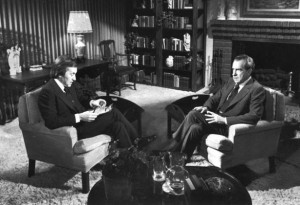 My definition of a good speech is one in which the speaker tells you something you already know in a way that you’ve never considered before. That’s why David Weinberger is one of my favorite speakers.
My definition of a good speech is one in which the speaker tells you something you already know in a way that you’ve never considered before. That’s why David Weinberger is one of my favorite speakers.
Here are my notes from David’s presentation this morning to the Mass. Tech Leadership Council’s Social Media Summit. These are adapted from my tweets from the event, but hopefully are self-explanatory. They’ve been cleaned up and expanded for clarity:
- The Web has always been social. The only difference with Web 2.0 is that it’s easier to build a presence.
- The page-centered Web paradigm has yielded to a people-centered one.
- Apple is about art. Google is about scale. We don’t know yet what Facebook is about. That’s unsettling, because Facebook is to the social Web what Google is to the Web.
- Media is frequently mis-characterized as publishing. The definition of media is that which mediates between parties. Media isn’t content.
- We are the media. We recommend knowledge to each other. New media transforms as it moves, unlike traditional fixed media like TV. Telegraphs are a fixed medium for sending messages. The Internet sends messages but it isn’t fixed. It changes every second.
- We take on properties of our media and our behavior comes to reflect the media we use. For example: The phone is intermittent, interuptive communications driven by a reason to make a call. The Web is rolling sets of instantaneous, always changing fragmented networks. These networks may be transient or last a lifetime. This is a completely different model than traditional media.
- Network sociality is more like a party than a phone call. Telephones are interruptive; the Internet is distractive. People interact with the medium differently.
- In the days of broadcast, markets were abstractions created by advertising. Now they are real and social.
- Transparency is now an imperative. For example, on Wikipedia you can always find out why an item of information is there. The entire process is open. More businesses will operate like this.
- We are getting comfortable with fallibility. The most popular stuff on YouTube is about humans screwing up. This doesn’t embarrass us as much as it used to. This acceptance of our own weaknesses will change the way organizations operate.
- People don’t buy drills or holes. They buy a nice place to hang towels to impress their relatives. Abstract to the level of basic human needs in order to understand behavior. This also works in marketing, BTW.
- There are four types of transparency critical to Social Media: sources, self, humanity, interest.
- Newspapers traditionally provided a curated mix of content reflecting a professionally derived combination of what we wanted to know and what we needed to know. News about Sudan is an “eat your broccoli” story. We don’t like it, but we need to know it. It’s not clear where we will get that kind of information in the future.
- The social media generation now expects important information to find them. That’s a dangerous attitude.
- Diversity is important but uncomfortable. Without shared interests, it’s hard to converse. When you have a truly diverse group, you get smalltalk because people don’t have a common platform for conversation. Nevertheless, diversity is important. We must fight the tendency to stick with people like us. Diversity requires conscious discomfort. We want to interact with like-minded people.
- Media is increasingly an echo chamber in which we choose to listen to people who share our views. Echo chambers are bad for democracy and culture, but marketers like them because they say what marketers want to hear. Echo chambers aren’t necessarily bad, but if that’s the only place you ever talk, you’ll never hear other points of view.





 Best New Face –
Best New Face –  Best Viral Marketing Success – Cindy Gordon told just seven people about Universal Orlando’s plans to launch a Harry Potter theme park. Word of mouth spread the story to 350 million others in a matter of a couple of days.
Best Viral Marketing Success – Cindy Gordon told just seven people about Universal Orlando’s plans to launch a Harry Potter theme park. Word of mouth spread the story to 350 million others in a matter of a couple of days. 



